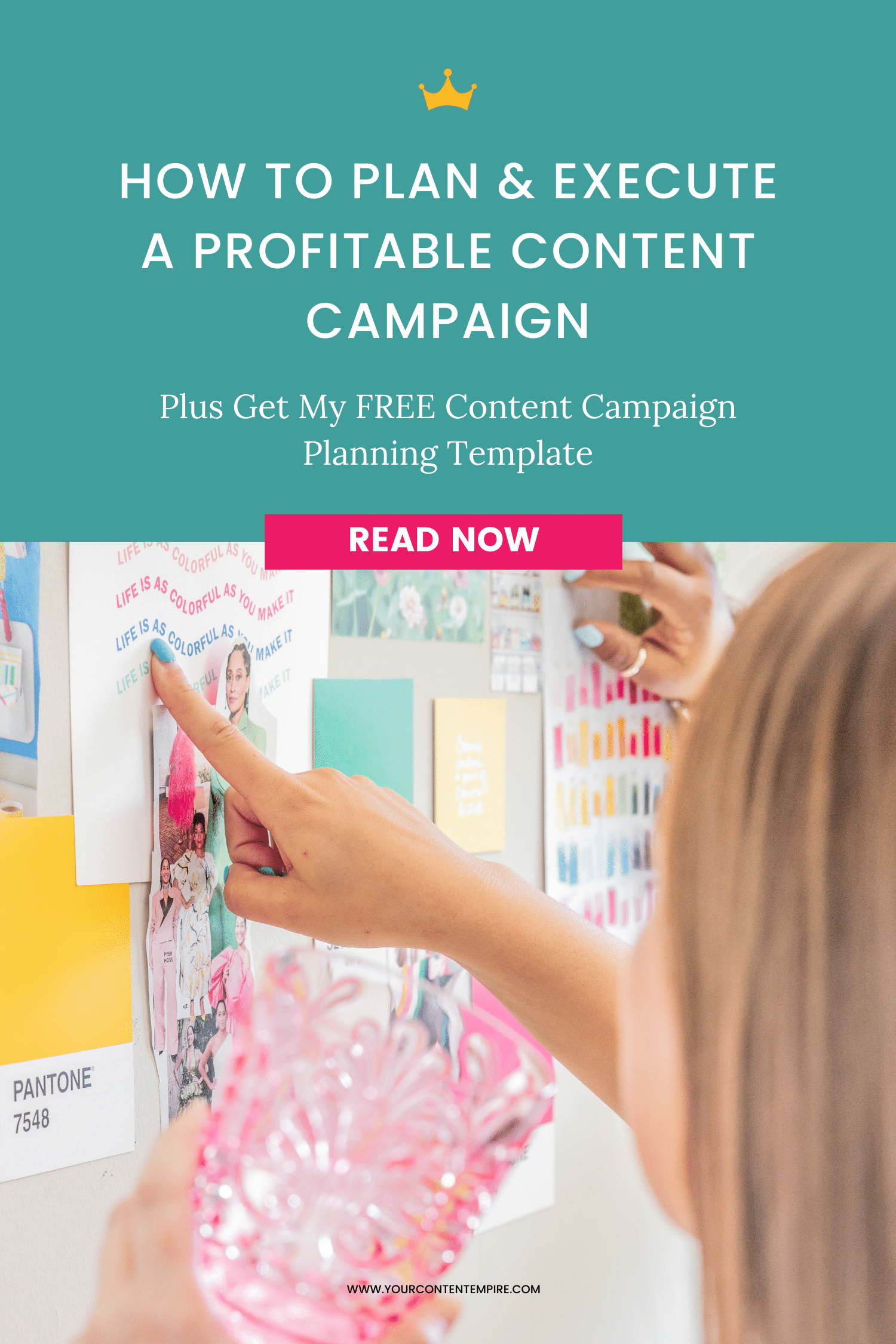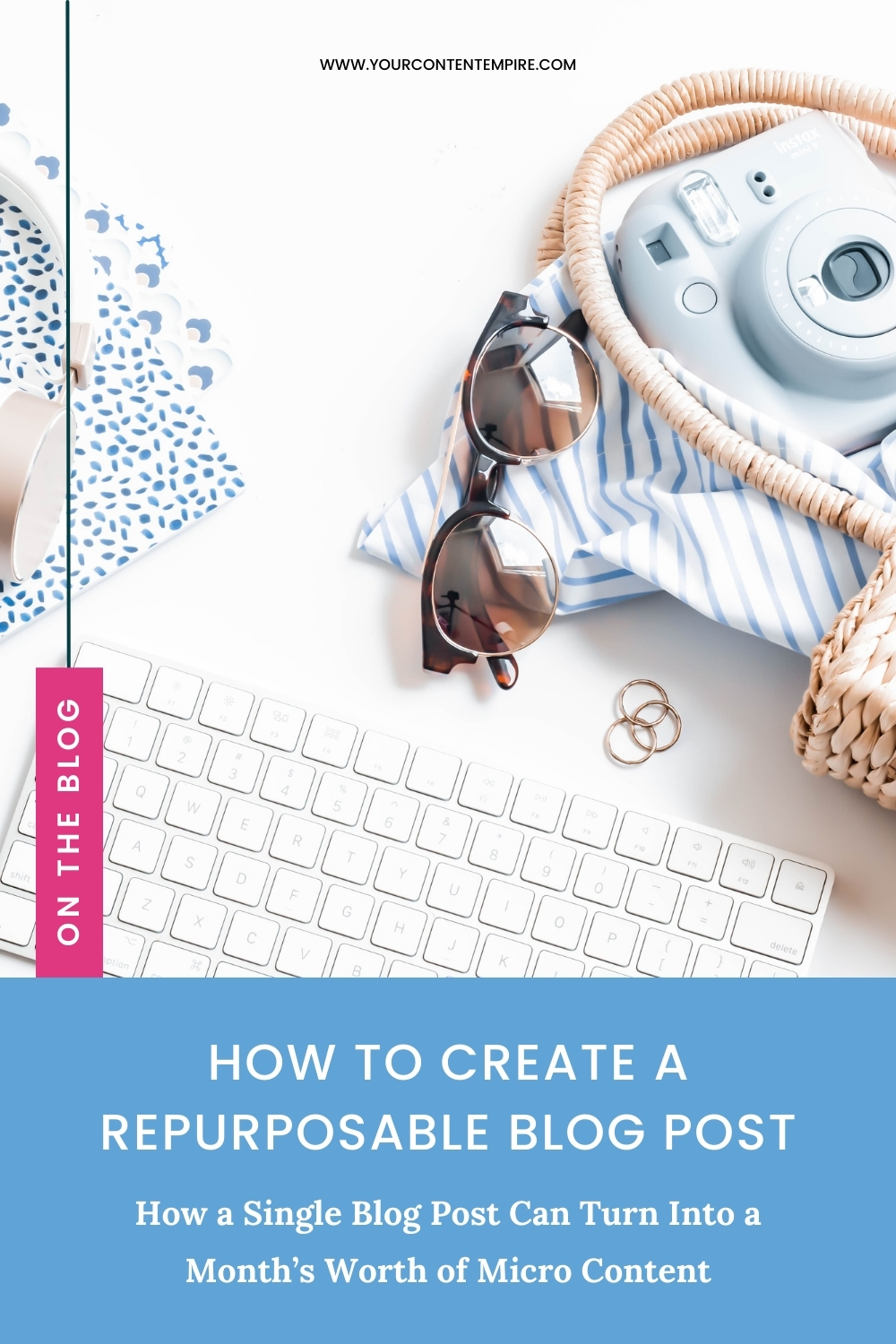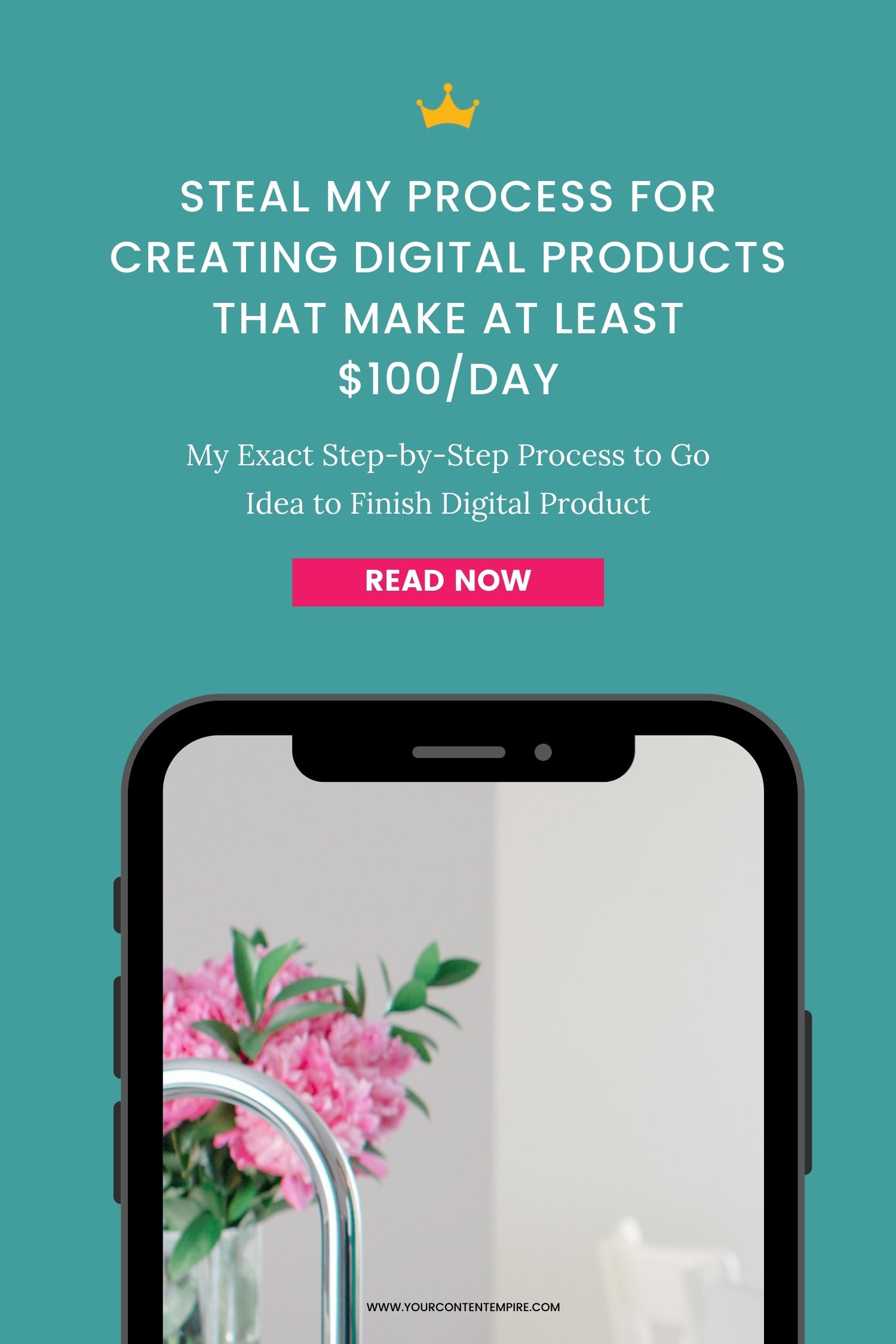Even though I've seen a direct correlation in my business between publishing content and making sales – I know that isn't the case for everyone.
In this post – I’m covering how to transform your editorial calendar into your biggest content profitunity yet by going into the tactical step-by-step process of how to plan and execute a content campaign.
By transforming your editorial calendar into a series of content campaigns, you’ll be able to nurture and build an audience around a particular subject and then make them an offer. After all you’re creating and publishing anyways – it may as well be done in a way to grow your business and boost profits.
What is the content campaign method?
The content campaign method has two phases – the pre-offer phase and offer phase. These campaigns typically run about 5 weeks with 4 weeks being for the pre-offer and the 1 week for the offer phase.
Here is a typical by the week breakdown of a content campaign although you can tailor this to fit your own schedule.

There are many variations of the campaign though that you could use instead:
- 5 weeks: 4 weeks of pre-offer content and 1 week of offer (sales) content
- 6 weeks: 5 weeks of pre-offer content and 1 week of offer (sales) content
- 6 weeks: 4 weeks of pre-offer content, 1 week sales event (webinar, challenge), 1 week offer (sales) content
The purpose of planning a content campaign is to focus on a single topic in order to create a journey for your readers that doesn’t have them jumping around, struggling to follow you from topic to topic or category to category.
When you bundle your content together as a theme they’re more powerful, they resonate with our audience more, and it builds momentum in our marketing more quickly because everything is aligned with a single subject. Repetition builds resonance so we’re building momentum with each week that we put things out on a particular subject.
The important thing is that 4 weeks are dedicated to this pre-offer content to nurture and warm and audience up first. Basically think of it as planting seeds with our audience. We’re not making a direct invitation for our offer yet, but we’re starting to get them familiar with it so that when we do make the offer it doesn’t seem like it’s coming from nowhere to them.
Then we have two weeks which is dedicated to the actual sales part of things. This phase of the campaign is intended to convert your audience from interested and engaged subscribers to a happy clients. The main point is that for this content campaign we’re focused on talking about and selling one thing. And all of our content on your blog, in your newsletter and on social media is focused on that one thing. There’s a clear theme and a focus.
What makes this method so effective?
What I love about it is that it focuses your content on a single subject (if I haven’t made the clear yet).
And even if you haven’t spoken about this topic for a while it’ll re-engage and reawaken your audience to it and restart the conversation so that they’ll be up to speed about why it even matters and how it relates to them.
I’ve had a lot of conversations with people whose launches have flopped. And one of biggies for this is that they went from not emailing their list for a long time straight into buy-my-stuff. That won’t work unless your goal is to get a lot of unsubscribes and complaints.
Another thing the pre-offer phase of our campaign does is allow us to attract a new, and highly aligned email subscribers who are actively seeking help with the subject area. A prime time to successfully invite them to an offer that makes sense for where they’re at.
The Pre-Offer Phase of Your Content Campaign
This phase includes…
1) 4 weekly blog posts about the topic that’s leading up to the offer
Like with everything, this doesn’t necessarily mean a written blog post. It could be podcast episodes, it could also be videos
2) Freebie or multiple content upgrades to include as call-to-actions on your blog posts
The next component of this phase is a some kind of freebie that people can sign up for that relates to the coming offer. Here’s how to set this up: For your existing email subscribers – clicking on this freebie should add some sort of tag or list that flags them as having an interest in the topic. For your blog readers who aren’t on your list yet, this freebie is the call-to-action that they can sign up for to (a) get added to your email list and (b) have the same tag or list that flags their interest in the topic. This is how you’ll build segments in your overall email list.
3) 4 newsletters to send your weekly blog post + freebie to your existing email list
Next you’ll have 4 weekly newsletters based on the blog posts that are sent to your entire list. These will also include an invitation to download the freebie. These are used as a way of re-engaging your email list and creating an interest segment (for the offer) within your overall list.
4) Social media content to promote your freebie + blog posts and attract new people interested in the topic (optional: paid advertisements)
Then you’ll create a weekly social media campaign around the blog post and freebie that direct people back to your blog and sign-up page. Optionally, you can add on some paid advertisements here, too.
The Offer Phase of Your Content Campaign
This phase is the 2 weeks that follow the pre-offer phase that invite your leads to take you up on your offer. In this phase, there are a number of ways that you can design and structure this two week period (plus feel free to lengthen it to 3 weeks). Here are some different options of ways that you can use the offer phase.
1) 1 week “open cart” for special offer + 1 week for delivery (and “recovery”) – best for something you’re delivering “live” or if there’s significant onboarding time
Option number one is to use one week for the open cart, where you’re going to be making that special offer through emails and direct follow ups. And then have a week for recovery, onboarding and delivery. This is best if you’re delivering something that’s live or if there’s significant onboarding time required.
2) 2 weeks “open cart” for special offer – best for an offer where you’re needing to do discovery calls and need extra time for people to make a decision
Another option is to use the full two weeks as an open cart for that special offer. This is best for an offer of which is maybe a bit more expensive where you may need to do discovery calls and give people some extra time to make a decision.
3) 1 week “Live Event” + 1 week “open cart for special offer” – best for a group program where you want to give a taster in the form of a challenge or webinar
A third option is to use one week for a live event and then a one week of an open cart for your special offer. This is great for really ramping up that engagement, really ramping up the interest in that offer and starting to plant even more seeds so that by the time you open the cart for your offer, your leads are really really ready for your solution. This is best for a group program or course where you want to give a taster in the form of a challenge or webinar.
Here's how to plan your first content campaign:
- Choose your first content campaign to start mapping out. At the top you’ll put in your content campaign name, what you’re promoting and the dates.
- Then use the 4 weekly sections for your pre-offer phase. Here’s where you’ll put your blog post, related newsletter and promotion. Plus jot down the call-to-action for the blog posts for what they’ll be downloading whether it’s a bigger freebie covering all 4 weeks or an individual content upgrade.
- Then for the offer phase, we have two sections in the bottom, to plan out your sales emails.
And voila! You’ve turned your editorial calendar into a profit-aligned power tool to help you reach your revenue goals!
The Bottom Line? If you want more profitable content, sell more.
This isn’t to say that all you’re going to be doing is selling, but if you’re going out of your way to provide high-value, service-based content for your community that relates to your offers, it goes without saying that they’re going to be interested in your paid offers.
The biggest change to your content bottom line can come from a simple intentional shift. Every quarter, try to run 2 of these content campaigns (especially if you’re creating weekly content anyways). So identify one product or service that you’re going to focus on promoting and selling. It’s a simple as knowing what you’re going to promote, who you’re going to sell it to and how you’re going to let them know about it. Most entrepreneurs do not put offers in front of their communities enough – this is an easy way to fix that!







